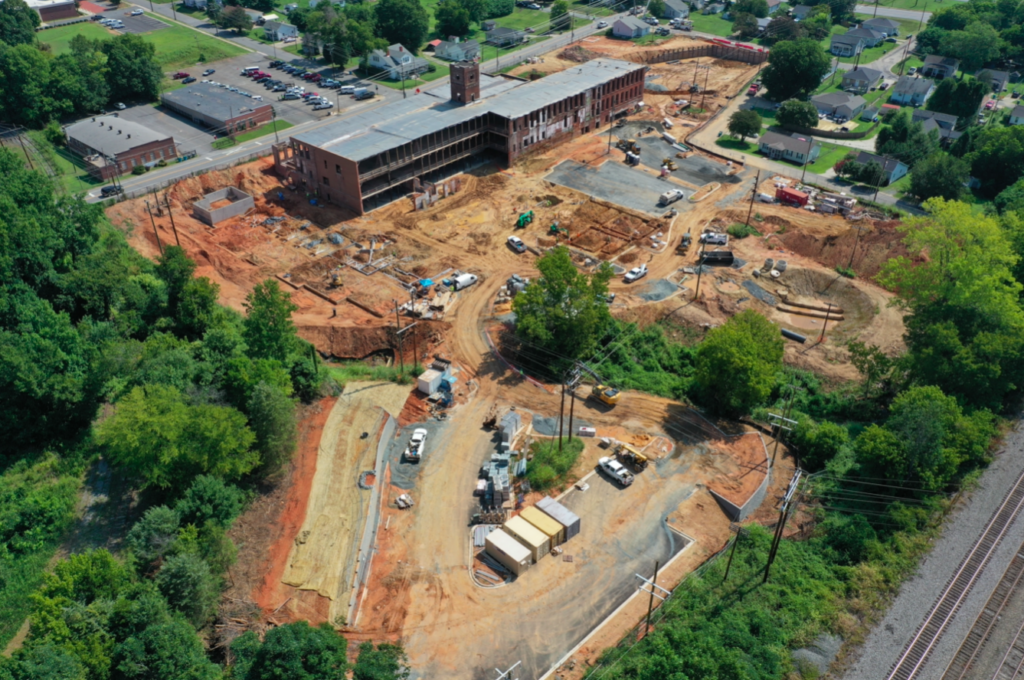October 6, 2021
Preserving the Past, While Building the Future: The Benefits of Adaptive Reuse
In case you missed it, Chronicle Mill is an upcoming mixed-use development in Belmont, North Carolina, and Armada Hoffler has the privilege of assisting in the construction and development of the property. As Armada Hoffler gains traction on the construction of Chronicle Mill, we continue to see the value of adaptive reuse.
What is Adaptive Reuse? Adaptive reuse is the concept of taking the existing structure of a building and using it for new or modern functions. This allows for the continued use of a viable community asset and space. It is a building strategy that is effective in optimizing performance, while saving time and energy.

The benefits of adaptive reuse are plentiful. One of the benefits is the ability to preserve the historical and architectural integrity of the building. Structures that are recreated following this construction concept are often repurposed and hold great value to the community. Reinstating the vitality of these structures keeps the culture encompassed within. When it comes to structures of special historical significance, like Chronicle Mill, actions are taken to make sure the heritage of the building is preserved.
Likewise, adaptive reuse projects are cost-saving and encourage investment. Rather than demolishing a site, which calls for additional expenses, we are able to salvage it. According to Progressive AE, construction costs are up to 50% less expensive for developments following an adaptive reuse structure rather than being built from scratch. Adaptive reuse encourages investment in the way that it requires new development and revitalization. For a property that would otherwise be vacant or unused, repurposing it allows for increased employment opportunities and tax generation.
There are also benefits for the environment. Adaptive reuse allows for energy conservation, which is the conscious act of using less energy. The energy conserved by upcycling existing structures and their materials helps to reduce the amount of natural resources it would take if the structure was rebuilt entirely. Click here to find more information about how Armada Hoffler practices eco-efficiency.
Additionally, adaptive reuse contributes to sustainability. Typically, existing structures that are repurposed into adaptive reuse projects are located in areas of significant population density and in very developed areas, so these projects provide an abundance of support for the local community. Adaptive reuse is also a sustainable practice because it promotes reuse which yields economic benefits for the area. Check out our Sustainability Report to learn more about Armada Hoffler’s sustainability efforts.
With that said, Armada Hoffler could not be more honored to partner with John and Jennifer Church to redevelop the historic Belmont landmark, Chronicle Mill. Utilizing this construction model is a great way to practice smart development and sustainable building. We look forward to discovering what Chronicle Mill is able to do for the community in Belmont and how it will transform its position as an established mixed-use community in the local market.
For more information on Chronicle Mill, check out our previous blog post.
You can also follow them on Instagram: @ChronicleMillBelmont!